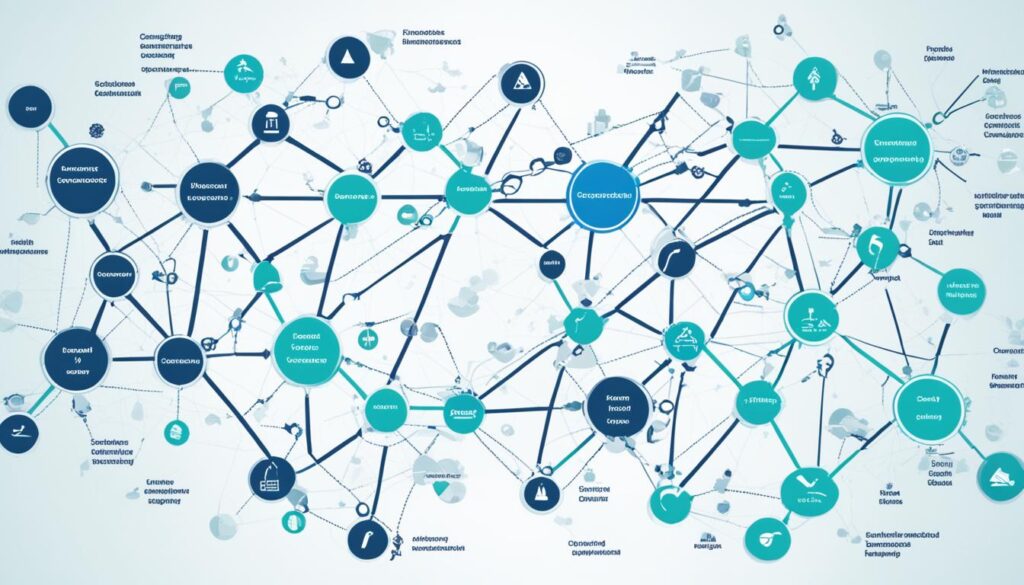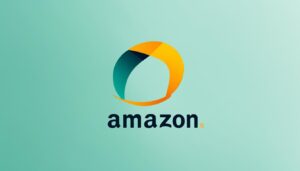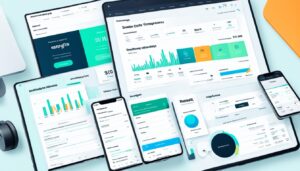The process of supplier sourcing and vetting is a vital component of effective supply chain management. Organizations must carefully evaluate potential suppliers to ensure they meet the necessary qualifications and align with ethical and quality standards. Places like Distributor Scout have you covered.
Supplier sourcing involves searching for and selecting the right suppliers, while vetting focuses on evaluating their suitability based on various criteria. Proper vetting helps establish robust supplier/client relationships grounded in shared values of quality, safety, integrity, employee satisfaction, and customer service.
To streamline the supplier sourcing and vetting process, companies typically follow a structured approach. This includes identifying criteria, conducting supplier searches, gathering and analyzing relevant documentation, and ultimately assigning a compliance status to suppliers.
The primary objective of supplier sourcing and vetting is to ensure a resilient and reliable supply chain that minimizes potential risks and disruptions. By implementing best practices, organizations can select the most qualified suppliers, reduce vulnerabilities, and foster strong business partnerships.
Key Takeaways:
- Supplier sourcing and vetting are crucial for a robust and reliable supply chain.
- Thorough evaluation and screening help identify ideal suppliers that align with company values.
- The process involves searching, evaluating, and assigning compliance statuses to suppliers.
- Supplier vetting mitigates risks and ensures supply chain resilience.
- Establishing strong supplier relationships is essential for long-term success.
Importance of Supplier Vetting
Supplier vetting plays a crucial role in today’s interconnected global marketplace. With supply chains becoming increasingly complex and interdependent, the process of vetting suppliers helps mitigate risks and ensures the resilience of the supply chain. Business continuity heavily relies on the performance of suppliers, and any disruptions or failures can have detrimental effects on organizations.
Understanding and assessing potential supplier risks are essential steps in the vetting process. By categorizing and prioritizing these risks, businesses can allocate appropriate resources and develop effective mitigation strategies. The gathering of comprehensive supplier information enables organizations to make informed decisions and select suppliers that align with their requirements and values.
Effective supplier vetting involves ongoing monitoring and evaluation to track supplier compliance and performance. This ensures that suppliers continue to meet the required standards throughout the supplier-client relationship. Conducting risk assessments and regularly reviewing supplier performance contribute to the overall resilience of the supply chain.
It is important to establish contingency plans and mitigation strategies for high-risk suppliers. By anticipating potential disruptions and developing plans to address them, organizations can minimize the impact of supplier failures and maintain business continuity. Supplier vetting not only helps organizations identify and manage risks but also fosters strong supplier-client relationships built on trust and shared expectations.
Overall, supplier vetting is a critical component of supply chain management that enables organizations to proactively assess risks, ensure supplier performance, and build a resilient supply chain that can withstand various challenges.
Let’s now take a closer look at the steps involved in the supplier vetting process and the importance of each:
The Supplier Vetting Process
1. Understanding Potential Supplier Risks
2. Categorizing and Prioritizing Risks
3. Gathering Comprehensive Supplier Information
4. Assessing Risk Factors
5. Developing Mitigation Strategies and Contingency Plans
6. Ongoing Monitoring and Evaluation
| Steps | Importance |
|---|---|
| Understanding Potential Supplier Risks | To identify and assess potential risks that may impact the supply chain. |
| Categorizing and Prioritizing Risks | To allocate resources and focus on addressing the most critical risks first. |
| Gathering Comprehensive Supplier Information | To gain insights into supplier operations and risk profiles. |
| Assessing Risk Factors | To evaluate risk factors and make objective decisions based on supplier performance, compliance, and other considerations. |
| Developing Mitigation Strategies and Contingency Plans | To establish measures for addressing identified risks and maintaining business continuity. |
| Ongoing Monitoring and Evaluation | To track supplier compliance, performance, and identify emerging risks. |
In the next section, we will delve into the process of understanding potential supplier risks and the importance of comprehensive risk assessment in supplier vetting.
Identifying Potential Supplier Risks
The first step in supplier risk assessment is to identify potential risks that could impact the supply chain. These risks include financial instability, operational disruptions, quality control issues, regulatory non-compliance, geopolitical instability, natural disasters, and ethical concerns.
A comprehensive review of suppliers, their locations, and the industries they operate in is necessary to identify vulnerabilities. This can be facilitated by utilizing supplier management software that leverages data for efficient analysis.
By identifying potential supplier risks, organizations can proactively address and mitigate these issues, ensuring a resilient and reliable supply chain. Let’s take a closer look at each risk factor:
Supplier Risk Factors:
- Financial Instability: Assessing the financial health and stability of suppliers is crucial to identify potential bankruptcy or insolvency risks. This includes reviewing financial statements, credit ratings, and monitoring any signs of financial distress or debt burden.
- Operational Disruptions: Evaluating suppliers’ operational capabilities and infrastructure is necessary to identify risks related to production delays, capacity limitations, or supply chain disruptions.
- Quality Control Issues: Analyzing suppliers’ quality control processes and track record helps in identifying risks related to product defects, recalls, or inconsistent quality standards.
- Regulatory Non-compliance: Ensuring suppliers comply with relevant regulations and industry standards reduces the risk of legal and regulatory penalties, reputational damage, and disruptions caused by non-compliant practices.
- Geopolitical Instability: Assessing geopolitical risks in the regions where suppliers operate helps identify potential disruptions due to political conflicts, trade disputes, or changes in regulations and policies.
- Natural Disasters: Evaluating supplier locations and their exposure to natural hazards such as earthquakes, hurricanes, or floods helps anticipate and mitigate supply chain disruptions caused by such events.
- Ethical Concerns: Investigating suppliers’ ethical practices, labor conditions, and compliance with human rights standards minimizes the risk of negative publicity, reputational damage, and legal liabilities associated with unethical behavior.
Identifying and understanding these potential risks enables organizations to develop effective risk mitigation strategies, establish contingency plans, and prioritize resources to ensure a resilient and robust supply chain.
Categorizing and Prioritizing Risks
Once potential risks are identified, it is crucial to categorize and prioritize them based on their potential impact and likelihood of occurrence. This allows organizations to allocate appropriate resources and address the most critical risks first. To achieve an objective evaluation and ranking of risks, organizations can develop a risk matrix or scoring system that aids in systematic categorization and prioritization.
Categorizing Risks:
- Identify different categories of risks based on their nature, such as financial risks, operational risks, market risks, regulatory risks, etc.
- Assign risk indicators or labels to each category to ensure clarity and consistency in the risk assessment process.
Prioritizing Risks:
- Evaluate the potential impact of each risk on the organization’s objectives, operations, and stakeholders.
- Assess the likelihood of each risk occurring based on historical data, expert opinion, and industry trends.
- Assign a priority or importance level to each risk based on the combination of its impact and likelihood.
By categorizing and prioritizing risks, organizations can effectively focus their efforts on addressing the most significant threats to their operations and objectives. This helps in making informed decisions regarding resource allocation, risk mitigation strategies, and contingency planning.
Gathering Supplier Information
Collecting comprehensive information about suppliers is crucial for gaining valuable insights into their operations and risk profiles. By gathering the necessary data, businesses can make informed decisions and establish strong partnerships with reliable suppliers. The following types of information should be collected:
- Supplier Risk Profiles: Assess the potential risks associated with each supplier. This includes evaluating their financial stability, operational history, and compliance with regulations.
- Financial Statements: Obtain the supplier’s financial statements, including balance sheets, income statements, and cash flow statements. These documents provide a clear picture of the supplier’s financial health.
- Certifications: Request information about the supplier’s certifications and licenses that validate their adherence to industry standards and regulations. Key certifications may include ISO certifications, environmental certifications, and quality management system certifications.
- Quality Control Processes: Understand how suppliers maintain quality standards throughout their operations. This includes gathering information on their quality control procedures, testing protocols, and compliance with product specifications.
- Insurance Coverage: Determine the extent of the supplier’s insurance coverage, including liability insurance and product liability insurance. This ensures that adequate coverage is in place to address any potential issues.
- Business Continuity Plans: Request copies of the supplier’s business continuity plans. These plans outline how the supplier will handle potential disruptions such as natural disasters, supply chain interruptions, or cybersecurity breaches.
To assess the overall risk profile of suppliers, it may also be necessary to gather information on sub-suppliers or subcontractors. This helps identify any potential risks further down the supply chain and ensures transparency in the supplier evaluation process.
“Collecting comprehensive supplier information is the foundation for effective supplier sourcing and vetting. It allows businesses to make informed decisions and mitigate potential risks in the supply chain.” – Supplier Management Expert
By gathering supplier information, businesses can establish a holistic understanding of their suppliers’ operations and risk profiles. This enables effective risk management and decision-making, ultimately leading to a more resilient and reliable supply chain.
Example Supplier Information Table
| Supplier | Risk Profile | Financial Statements | Certifications | Quality Control Processes | Insurance Coverage | Business Continuity Plans |
|---|---|---|---|---|---|---|
| Supplier A | Medium | Link to financial statements | Link to certifications | Robust quality control processes | Comprehensive insurance coverage | Business continuity plans in place |
| Supplier B | Low | Link to financial statements | Link to certifications | Adheres to strict quality control protocols | Insurance coverage for specific risks | No business continuity plans provided |
| Supplier C | High | Link to financial statements | No certifications available | Quality control processes need improvement | Minimal insurance coverage | Basic business continuity plans |
Table: Example supplier information table showcasing different suppliers’ risk profiles, financial statements, certifications, quality control processes, insurance coverage, and business continuity plans.
Assessing Supplier Risk Factors
When evaluating potential suppliers, it is essential to assess various risk factors to make informed decisions. These factors include:
- Financial Stability: Analyzing a supplier’s financial health and stability is crucial to ensure their ability to fulfill contractual obligations and maintain a reliable partnership.
- Geographic Location: Consider the geographic location of the supplier to assess potential risks associated with transportation, geopolitical instability, or natural disasters that may impact the supply chain.
- Industry Volatility: Evaluate the volatility of the supplier’s industry, taking into account market fluctuations, technological advancements, and competitive factors that could influence their stability and long-term viability.
- Past Performance: Review the supplier’s track record and performance history to gauge their ability to meet quality standards, delivery timelines, and customer expectations.
- Regulatory Compliance History: Assess the supplier’s compliance with relevant regulations, certifications, and industry standards to ensure they meet necessary requirements.
- Legal or Ethical Issues: Investigate the supplier’s legal or ethical issues, such as litigation, ethical violations, or disputes, which may pose reputational and legal risks to the business.
By systematically evaluating these supplier risk factors, businesses can make objective decisions and prioritize their supplier selection process. Assigning risk ratings or scores to each factor helps in comparing and contrasting suppliers, enabling organizations to establish a resilient and trustworthy supply chain.
“Effective evaluation of supplier risk factors ensures informed decision-making and strengthens supply chain resilience.”

The image above visually represents the multifaceted nature of evaluating supplier risk factors and showcases their interconnectedness in managing a reliable supply chain.
Mitigation Strategies and Contingency Plans
Developing effective mitigation strategies and contingency plans is crucial for managing high-risk suppliers and ensuring a resilient supply chain. By collaborating closely with suppliers, organizations can proactively address identified risks and implement measures to mitigate potential disruptions. Here are some key strategies to consider:
- Monitoring and Auditing: Implementing additional monitoring and auditing processes can provide real-time visibility into supplier performance and enable proactive risk management. This includes regularly assessing supplier compliance, evaluating process efficiency, and identifying areas for improvement.
- Supplier Diversification: Diversifying the supplier base can help mitigate risks associated with overreliance on a single supplier. By identifying and qualifying alternative suppliers, organizations can reduce the impact of potential disruptions and maintain continuity of supply.
- Alternative Supplier Sourcing Options: Establishing alternative sourcing options supports supply chain resilience by enabling quick adaptation to changing circumstances. This may involve exploring local suppliers, establishing partnerships with multiple suppliers in different regions, or considering in-house production capabilities.
- Risk Mitigation Clauses: Renegotiating contracts with suppliers to include risk mitigation clauses empowers organizations to hold suppliers accountable for managing identified risks. These clauses can outline specific actions and responsibilities, providing a legal framework for addressing potential disruptions and ensuring supplier compliance.
It is crucial to regularly review and update mitigation strategies and contingency plans as the risk landscape evolves. By continuously evaluating and refining these measures, organizations can effectively navigate uncertainties and maintain a robust supply chain.
Ongoing Monitoring and Evaluation
Once suppliers have been selected and onboarded, ongoing monitoring and evaluation are essential to ensure continued compliance, performance, and risk mitigation. This phase of the supplier vetting process involves regularly monitoring supplier performance, assessing key performance indicators (KPIs), and implementing supplier scorecards or performance metrics.
By monitoring supplier performance, organizations can track adherence to quality standards, delivery timelines, and contractual agreements. It allows for the identification of any potential issues or deviations from expected performance, enabling timely corrective action.
“Continuous monitoring of supplier performance, financial health, and industry developments is necessary to identify emerging risks and ensure ongoing supplier compliance.”
Key performance indicators (KPIs) are specific metrics used to measure a supplier’s performance in critical areas. These indicators may include delivery accuracy, on-time delivery, quality control, responsiveness, and customer satisfaction. By establishing KPIs, organizations can quantitatively assess supplier performance and make informed decisions based on data-driven insights.
Supplier scorecards or performance metrics provide a comprehensive overview of a supplier’s performance across multiple criteria. They enable organizations to evaluate suppliers holistically, considering factors such as quality, cost, reliability, and service levels. Supplier scorecards promote transparency and accountability, encouraging suppliers to strive for continuous improvement and alignment with organizational objectives.
In addition to monitoring and evaluation, it is crucial to establish effective communication channels with suppliers. Regular meetings and discussions help maintain a strong supplier-client relationship, fostering collaboration and addressing any concerns.
“Ongoing monitoring and evaluation of suppliers are essential to ensure continued compliance, performance, and risk mitigation.”
| Benefits of Ongoing Monitoring and Evaluation |
|---|
| 1. Risk Mitigation |
| 2. Performance Improvement |
| 3. Supplier Accountability |
| 4. Identifying Cost Savings Opportunities |
| 5. Supplier Relationship Strengthening |
By continually monitoring and evaluating suppliers, organizations can identify potential risks and take proactive measures to mitigate them. Improved supplier performance enhances overall supply chain efficiency and reduces disruptions.
Best Practices for Ongoing Supplier Monitoring and Evaluation
- Regularly review supplier performance against established KPIs and benchmarks.
- Track and analyze supplier performance data to identify areas for improvement.
- Implement corrective actions and provide feedback to suppliers to drive continuous improvement.
- Establish open lines of communication to address any concerns or issues promptly.
- Periodically reassess supplier risk factors to ensure continued risk mitigation.
Effective supplier monitoring and evaluation require a collaborative approach, emphasizing communication, data-driven analysis, and continuous improvement.
By implementing robust ongoing monitoring and evaluation processes, organizations can proactively manage supplier performance, mitigate risks, and strengthen supplier relationships. This ensures a resilient supply chain that meets quality, cost, and delivery expectations, ultimately contributing to the success of the business.
Utilizing Tools and Technology
To effectively manage supplier information, relationships, and performance, organizations should leverage powerful supplier management tools and procurement software. These tools offer a range of features and capabilities that streamline the procurement process, enhance visibility, and drive operational efficiency.
A centralized database serves as a centralized repository, enabling easy access to supplier data and documentation. It eliminates the need for manual record-keeping and allows stakeholders to quickly locate critical information when needed. This centralized approach facilitates efficient supplier evaluation, risk assessment, and ongoing performance monitoring.
Source-to-pay procurement software integrates the entire procurement lifecycle into a single platform. It empowers organizations to manage and automate processes such as supplier sourcing, contract management, procurement, and payment. By consolidating these functions, source-to-pay software provides real-time visibility into the end-to-end procurement process, making it easier to identify bottlenecks, mitigate risks, and ensure compliance.
The utilization of supplier management tools and procurement software not only improves operational efficiency but also enhances collaboration and communication with suppliers. These tools enable seamless data exchange, efficient document management, and streamlined communication channels, facilitating a stronger and more productive supplier-client relationship.
Potential benefits of utilizing supplier management tools and procurement software:
- Enhanced efficiency and productivity through automation and streamlined processes;
- Improved supplier performance monitoring and evaluation;
- Enhanced visibility and transparency into the procurement process;
- Reduced risk through real-time monitoring and identification of potential issues;
- Streamlined communication and collaboration with suppliers;
- Improved compliance and adherence to regulatory requirements;
- Cost savings through optimized procurement practices.
By leveraging supplier management tools and procurement software, organizations can unlock the full potential of their supplier relationships, drive operational excellence, and achieve a competitive advantage in today’s dynamic business landscape.
Conclusion
Supplier sourcing and vetting play a critical role in building a resilient supply chain. By adopting best practices and conducting thorough evaluations, organizations can mitigate potential risks and ensure supplier compliance. The ongoing monitoring and collaboration, coupled with the use of tools and technology, help establish strong supplier relationships, minimize vulnerabilities, and navigate the complexities of the global marketplace with confidence.
Learn More About Amazon Product Research
FAQ
What is supplier sourcing and vetting?
Supplier sourcing and vetting is the process of evaluating and selecting potential suppliers based on a range of qualifications and standards. It involves researching, screening, and collecting documentation to ensure that suppliers align with company values and meet specific criteria.
Why is supplier vetting important?
Supplier vetting is crucial for mitigating risks and ensuring a resilient supply chain. Evaluating supplier performance and compliance helps avoid disruptions and minimizes the potential impact of supplier failures on business continuity.
What potential risks should be considered when vetting suppliers?
When vetting suppliers, it is important to assess risks such as financial instability, operational disruptions, quality control issues, regulatory non-compliance, geopolitical instability, natural disasters, and ethical concerns. Comprehensive supplier review helps identify vulnerabilities and potential risks.
How can risks be categorized and prioritized?
Risks can be categorized and prioritized by developing a risk matrix or scoring system that objectively evaluates and ranks them based on their potential impact and likelihood of occurrence. This helps allocate appropriate resources and prioritize addressing the most critical risks first.
What information should be gathered during the supplier vetting process?
During the supplier vetting process, it is important to gather comprehensive information about suppliers, including financial statements, certifications, quality control processes, insurance coverage, and business continuity plans. Information on risk management practices and the ability to handle potential disruptions should also be requested.
What factors should be considered when assessing supplier risk?
When assessing supplier risk, factors such as financial stability, geographic location, industry volatility, past performance, regulatory compliance history, and any potential legal or ethical issues should be taken into account. Risk ratings or scores can be assigned to suppliers to facilitate objective decision-making.
What are some mitigation strategies and contingency plans for high-risk suppliers?
Mitigation strategies and contingency plans for high-risk suppliers may include implementing additional monitoring and auditing processes, diversifying the supplier base, establishing alternative sourcing options, or renegotiating contracts to include risk mitigation clauses. Regular review and updates of these strategies are important as the risk landscape evolves.
Why is ongoing monitoring and evaluation of suppliers important?
Ongoing monitoring and evaluation of suppliers are crucial to track their performance, financial health, and industry developments. By establishing key performance indicators (KPIs) and conducting regular assessments, organizations can ensure supplier compliance, transparency, and accountability.
How can tools and technology assist in supplier management?
Utilizing comprehensive supplier management tools, such as procurement software and centralized databases, offers real-time visibility into supplier performance and facilitates efficient management of supplier information, relationships, and overall process management.
What is the significance of supplier sourcing and vetting for a resilient supply chain?
Supplier sourcing and vetting play a critical role in building a robust and reliable supply chain. By following best practices, conducting thorough evaluations, and implementing ongoing monitoring, organizations can mitigate potential risks, ensure supplier compliance, and establish strong supplier relationships for a resilient supply chain.




